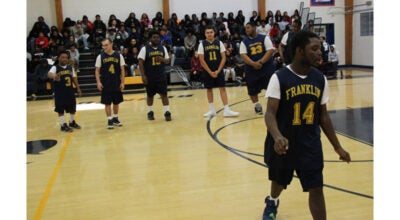COLUMN: What is ChatGPT?
Published 6:10 pm Wednesday, March 8, 2023

- Robert N. "Bob" Holt
|
Getting your Trinity Audio player ready...
|
If you are in the “baby boomer” generation or close to it, you will recall having to write the dreaded research paper in high school. Franklin High School students in the early 1960s were blessed to have an outstanding faculty who taught English and literature. For me, it was Elizabeth Evans in the ninth, Iva Johnson in the 10th and 11th, and Prudence Thorpe in the 12th grade. To say that they were picky about proper sentence construction, punctuation, and spelling would be an understatement.
Mrs. Johnson in the 10th grade assigned the dreaded term research paper. This was a rather complex undertaking with numerous steps. Step 1 was a one-one discussion with her to select an appropriate topic. This research paper in step 2 required that students select and view a number of appropriate sources, document those sources in the body of the paper with proper footnotes at the bottom of each page, and provide a complete bibliography at the end of the paper listing the sources of all references. Further, she required us to take notes on 4 x 6 cards and turn them in with our paper.
Step 2 was the time consuming part. It required a trip to the library, find the card catalog, and begin searching for sources identified on cards sorted by topic. Students could then look for the sources of books, manuals, and other materials which contained information related to that topic.
The card catalog information contained a code based on the Dewey Decimal System which was first used in 1876 and is still in use today. It has been revised 23 times, the last revision was in 2011.
Step 3 required the student to find the source in the library (hopefully it had not been checked out.) At this point the real fun began with the 4 x 6 cards. Students took notes on the cards being careful to note the page number in the source so it could be referenced in the body of the paper. It took hours finding usable information and then taking complete notes.
Step 4 required sorting note cards, planning the structure of the paper, and finally writing it. Usually only business students in high school could type so most of the papers were handwritten. There were no word processing programs to help the student revise wording or check spelling.
Step 5 was guarding your finished paper until you safely arrived at school and then smiling as you handed in your paper to Mrs. Johnson. You patted yourself on the back as you took your seat confident that you had done the best you could.
Then, in 1998, Google co-founder Larry Page used the word “Googling” to refer to the Google search engine on the internet. It is a means of finding information on the World Wide Web in just a few seconds. Now anyone could gather information on an unlimited number of topics. Some organizations pay Google higher fees to have their information appear first or near the top of searched topics. Reference information on the topic searched is presented although at times by fake or clandestine organizations.
Google (parent company Alphabet) has been referred to as the most powerful company in the world because of its market dominance and the information it gathers from users of its services.
Fast forward to today and there is “ChatGPT.” This is a product developed by Microsoft which it calls an “online artificial intelligence chatbot” released in December 2022. The user can request information and receive a human-like response in writing. Responses are characterized as conversational mode…no abbreviations similar to what we see in text messages. Because of this feature ChatGPT can write essays, reports, stories, and research papers at no cost to the user.
The artificial intelligence (AI) feature of this program is that no human touches the output in any way. The capabilities and ease of use have educators concerned that students can, for free and in a matter of seconds, receive a well-researched and written paper to turn in as their work. Since ChatGPT has been available only a few months, it has yet to be properly evaluated and use by students determined. Some school divisions have already blocked its use on school-owned computers.
Back to Mrs. Johnson’s research paper, Google has eliminated the laborious and time consuming search process, and ChatGPT has eliminated the actual writing. Thus, the student in a matter of minutes can turn in a paper students years ago literally took days to accomplish.
The bottom line — will students and employees be judged on their ability to use artificial intelligence or will they be judged on what they actually know about a topic through a thorough understanding of the process? Only time will tell.
Robert N. “Bob” Holt, a Franklin native, is a retired professor of business management and real estate at Southwestern Community College in Sylva, North Carolina. He holds bachelor’s, master’s and doctoral studies degrees from Virginia Tech and was a member of the university’s Corps of Cadets. His email address is hrobert@vt.edu.





